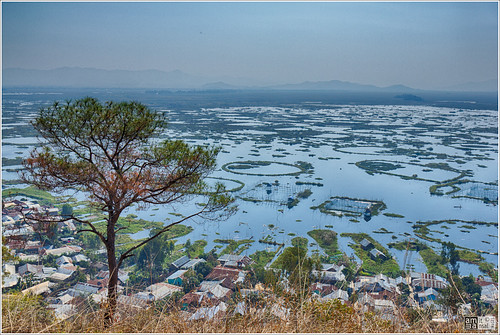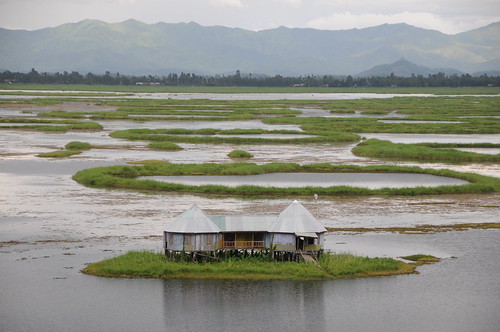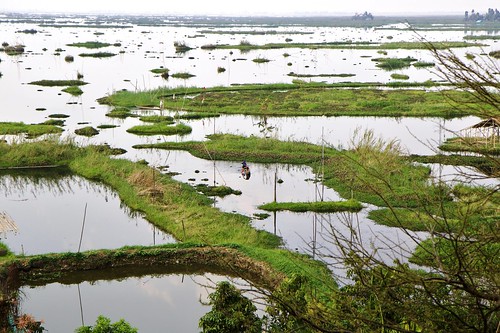Loktak Lake, in Manipur, India, with a surface area ranging from 250 square kilometres in the dry season to 500 square kilometres after the rainy season (an average area of about 287 square kilometres), is South Asia's largest freshwater lake.
A distinctive feature of Loktak Lake is that it is dotted with thousands of small floating islands, which in reality are not land masses but rather remarkable natural formations, locally known as phumdi (a Manipuri word meaning floating mats). These floating mats are composed of a combination of vegetation, soil, and decomposed organic matter. This phenomenon is unique to Loktak Lake, where the vegetation in its shallow water accumulates and consolidates over several years, eventually reaching a thickness of up to 2 metres. Only a small green surface of the floating mass appears above the lake's water, and its major part is submerged beneath the lake, akin to icebergs. This allows the phumdi's living roots to extend towards the lakebed during the dry season, enabling them to absorb nutrients from the sediment. With the arrival of the rainy season, as the lake fills up, the phumdis float up again.
The size of phumdis varies greatly, from a few square metres to several square kilometres. The submerged portion of the phumdis is a rich source of nutrients for the growth of various aquatic flora and fauna, and the top surface provides shade for the fish population. Taking advantage of this, the local people tow and join several floating masses into large circular or rectangular enclosures for fish farming. These fish farms provide a livelihood for thousands of fishermen, and about 1,500 metric tonnes (3.3 million pounds) of fish are caught every year.
Many fishermen have built their hutments and dwellings over the phumdis and stay permanently on the watery surface of Loktak Lake. It is estimated that more than 4,000 people live in these floating homes. A floating elementary school, a floating community health centre, and a few floating tourist lodges and food joints have also been established in the area.
The largest single floating mass of the phumdis, covering an area of 40 sq km (15.4 sq mi), is in the south-eastern part of Loktak Lake, and it is the last natural habitat of the brow-antlered deer (Sangai), the dancing deer of Manipur. It has been declared a wildlife sanctuary called Keibul Lamjao National Park and is the only floating national park in the world.
Construction of the Ithai Dam in the 1980s has disturbed the ecosystem of the lake. Due to damming, the water levels remain high year-round, preventing the phumdis from sinking and reaching the lakebed for nutrients. Consequently, the phumdis are gradually thinning and disintegrating.
Image Source:
NASA’s Earth Observatory
Image Source: Google Maps

Image from
Flickr is by zehawk
Image from
Google Maps is by
Lk
Sumneilal

Image from Flickr is by Sharada Prasad CS

Image from
Flickr is by
Water Alternatives
Photos
Image from
Google Maps is by
Bidyanand
Hijam
The brow-antlered deer (Sangai):
Image from
Google Maps is by
Ramesh
Smile

Image from
Flickr is by Eden,
Janine and Jim
Location in Google Maps
Source of information and more information:



No comments:
Post a Comment
Please feel free to write your comments but remember that the same are moderated. So please do not post SPAM comments i.e. your business links here including surrogate links.
Comments containing SPAM are liable for rejection.